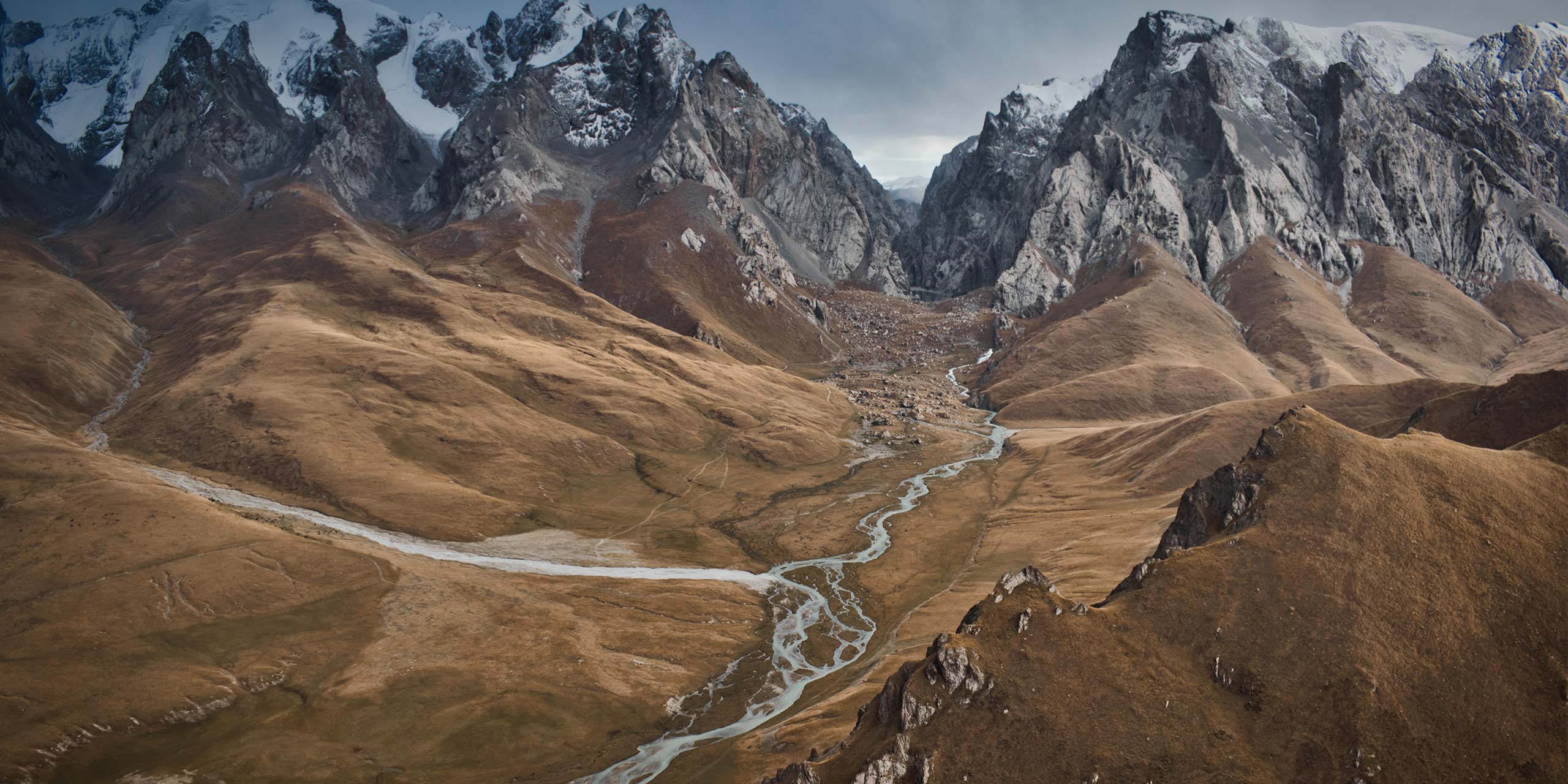
Did I imagine it, frost forming by 11 pm inside our tent? The temperature had undoubtedly dropped, and steam was emanating from my mouth. Last week I heard stories of trekkers feeling too warm to sleep. What a difference a few September days can make. I decided to reach over to my backpack and decant all remaining garments.
Now more layered than a Russian doll, I jumped back into my sleeping bag and eventually thawed out. By now, snowflakes were landing heavily around the campsite: a sight not expected to be witnessed for another six weeks. But this is Kok Kiya, a place that doesn’t believe in the predictable.
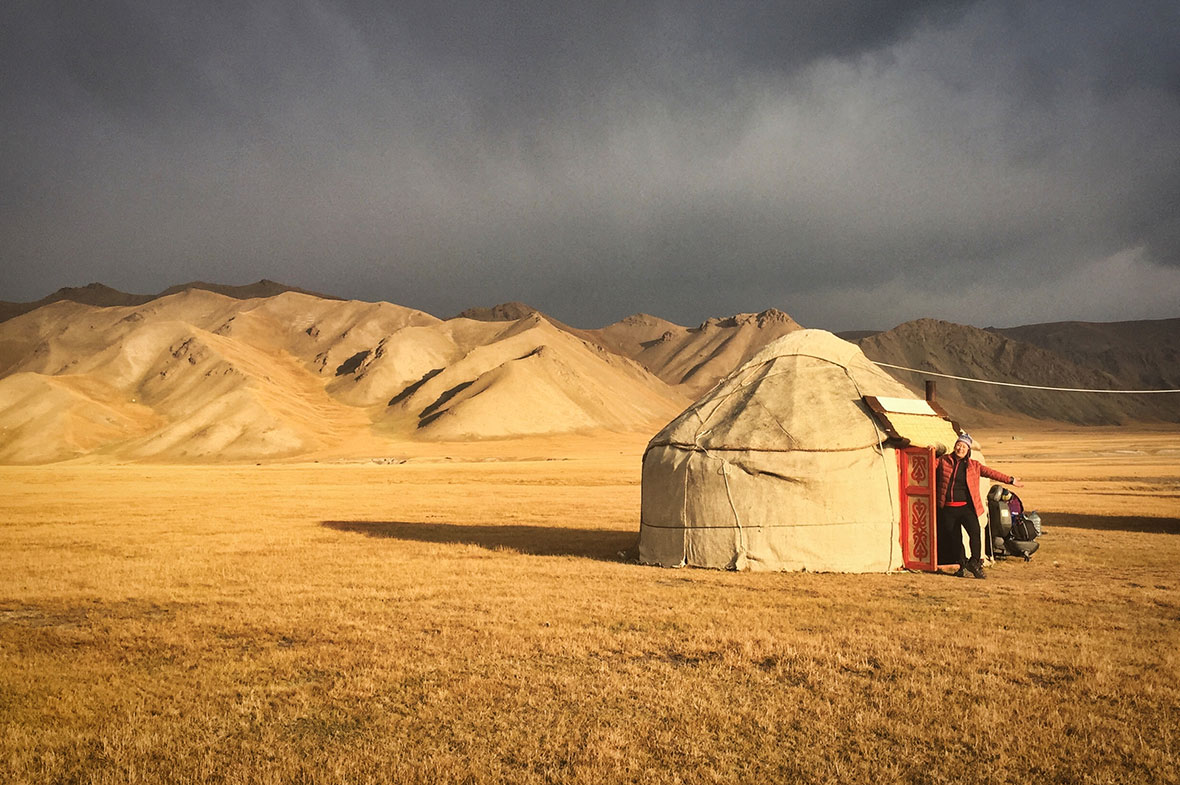
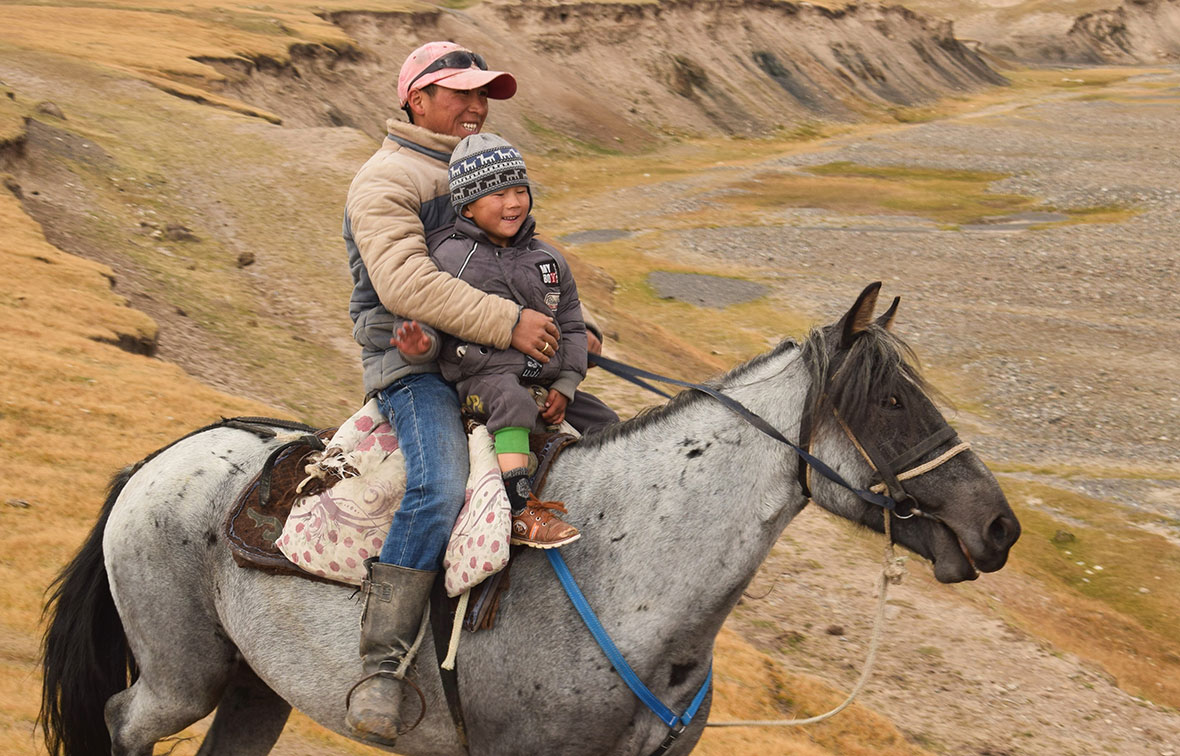
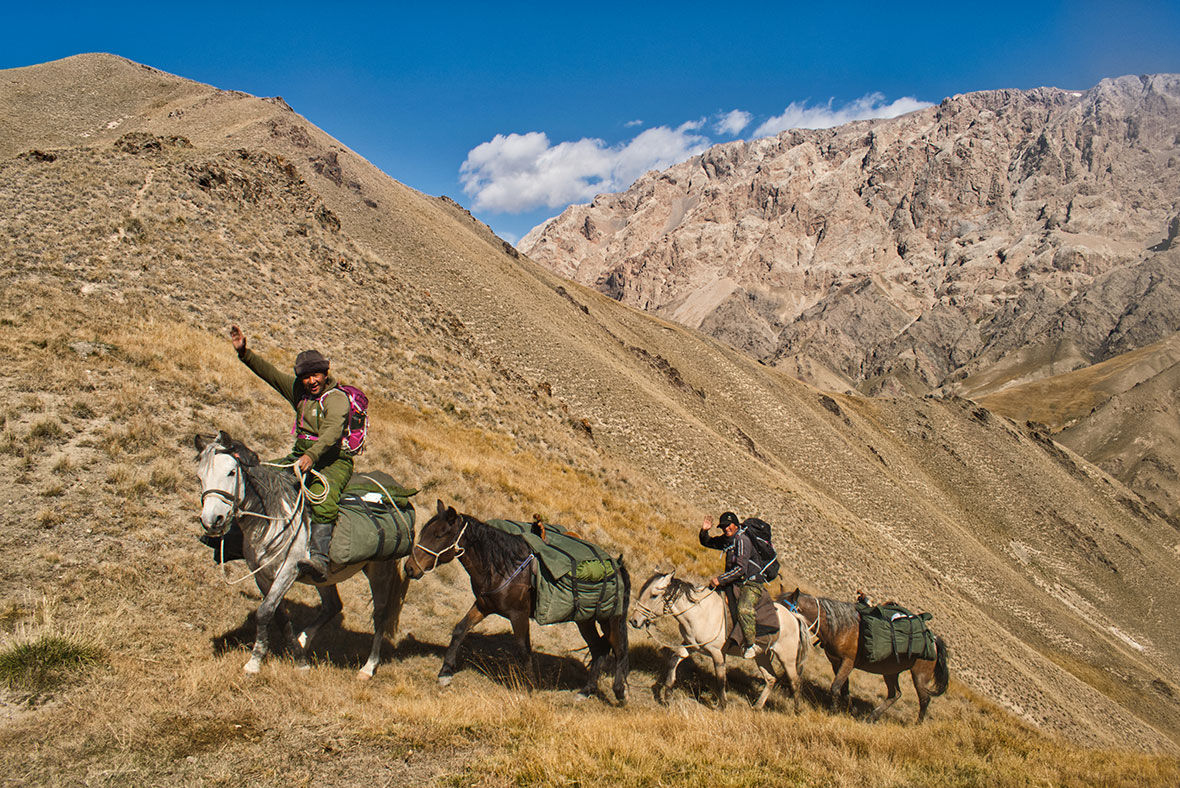
After meeting up with members of the hiking group in Bishkek, we boarded our minibus for the 550-kilometer ride to our mountain base. Located by the front passenger seat stood our cheerful interpreter Berdibai, who would act as our direct communication link to our nomadic hosts.
As we approached Kok Kiya, I glanced towards the valley, now beautifully lit by amber light and surrounded by imposing jagged mountains.
We finally arrived at our yurt camp and met our hosts, husband and wife, Meder and Jazgul, their children, and several horse riders. Lots of smiles and handshakes before being shown to our yurts.
Later, Meder’s horsemen call us in for dinner in a supersized dining yurt. The delicious food fused Chinese and Middle-Eastern flavors: a legacy of the melting pot of influences found along the Silk Road.
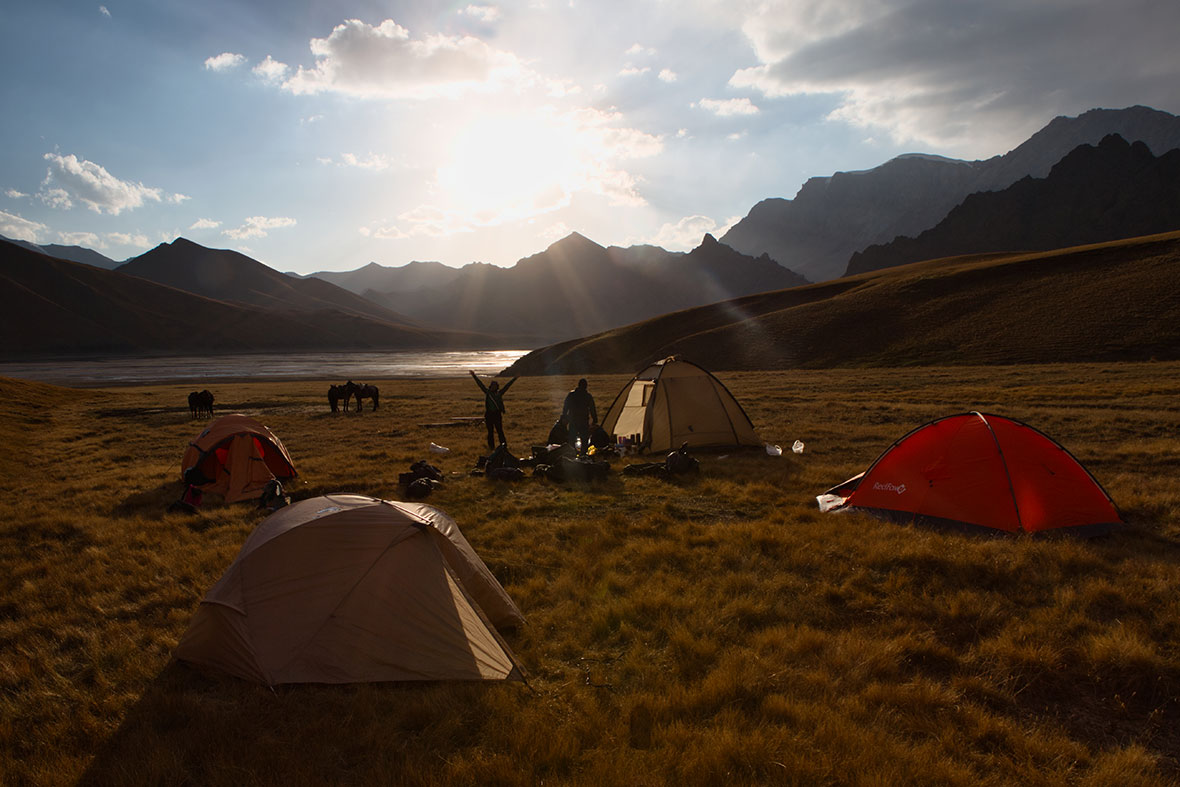
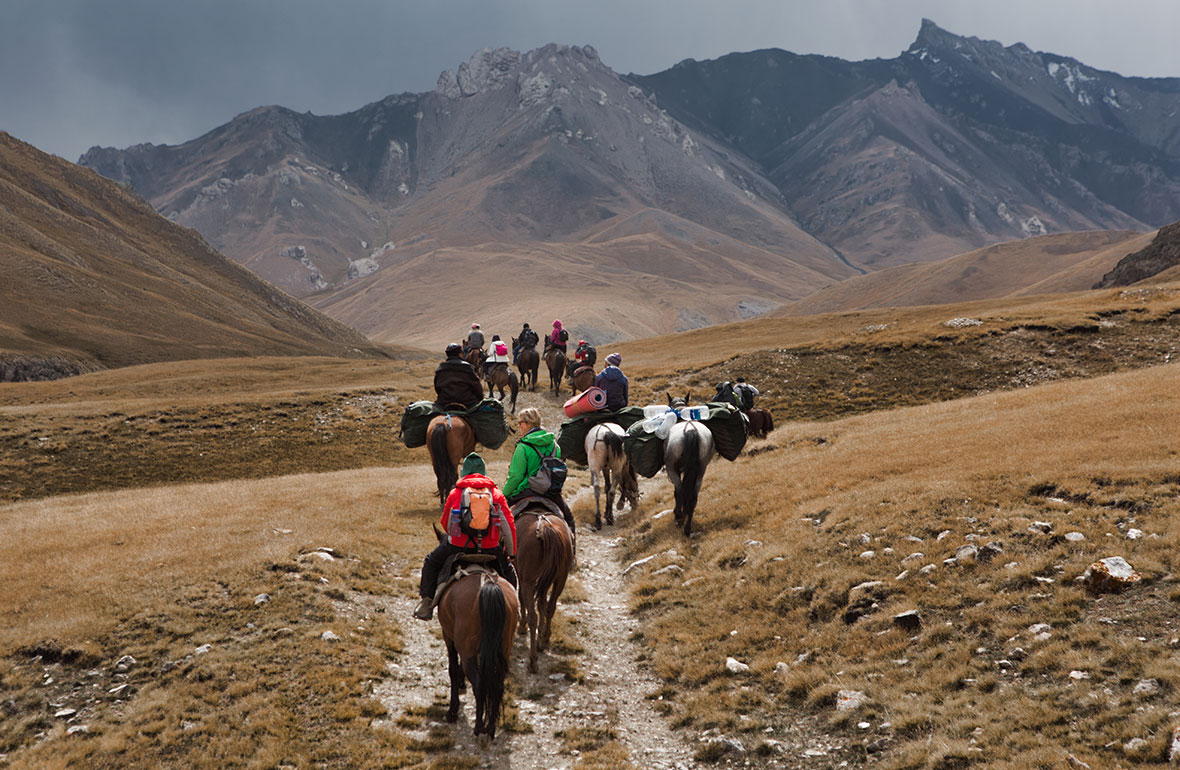
After a comfortable night’s sleep, I woke up to a disjointed symphony of farmyard sounds. Dogs barking, horses rustlings, and roosters bellowing out their alarm calls. Meder and co were preparing for the day’s hike, and after a large helping of porridge, we left camp with a couple of supply horses.
The further we walked into the valley, the more its vast size became apparent. Without signs of modern life, my mind focused unhindered on the beauty of the terrain. The mustard-colored foothills seemed like a glorious juxtaposition to Tian Shan’s daunting snow-capped peaks.
I asked Berdibai if Kyrgyz people, nomadic or otherwise, had ever lived here. He explained with Meder’s help that some of the horse trails in the area were offshoots of the Silk Road. Merchants would often camp overnight in the area.
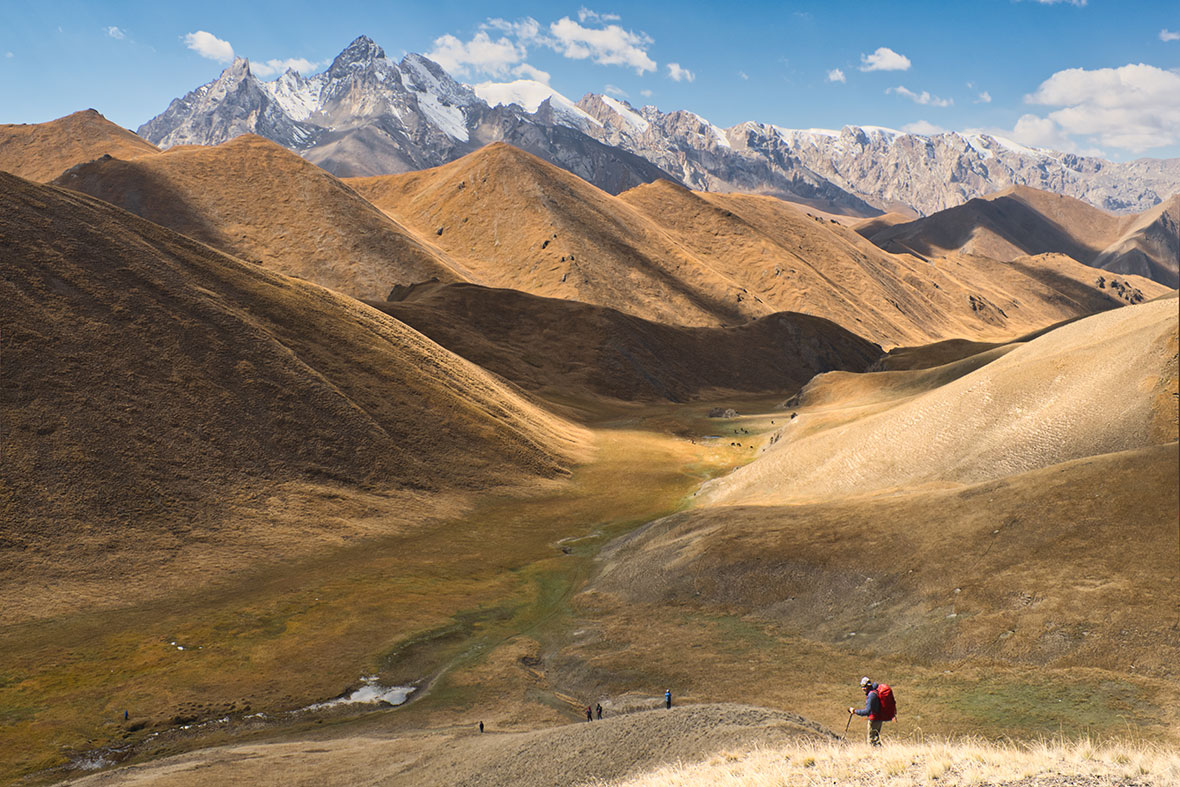
The following day we made our way to the tallest peak of our trip, Mama Mountain. At just over 4000 meters, the summit lay a 700-meter steep climb above Meder’s Camp. The altitude change was noticeable. Our measured walk was a chance to get to know the hiking group, most of whom I was meeting for the first time.
Slightly breathless, but happy, we all stood proudly at the top of Mama Mountain. We congratulated each other and captured a few group shots. The bird’s-eye view unveiled mother nature’s hard work. The river’s tributaries resembled arteries and veins pumping life into the land below. Such surreal vistas brought out emotions within me of wonderment and gratitude.
The next day at our camp, Berdibai, Meder, and his assistant Azermat were rustling up the horses on a chilly but cloudless morning. I watched the horses lead out with pensive anticipation. In theory, taller group members (myself included) paired up with larger horses, and we began to mount with Azemat’s help. We all looked tentative as most horses took control of their riders. Some refused to move, while others jettisoned in different directions.
With so many beautiful memories, I knew I’d fallen for this tiny corner of the world… truly, nomadly, deeply.
Peter Elia
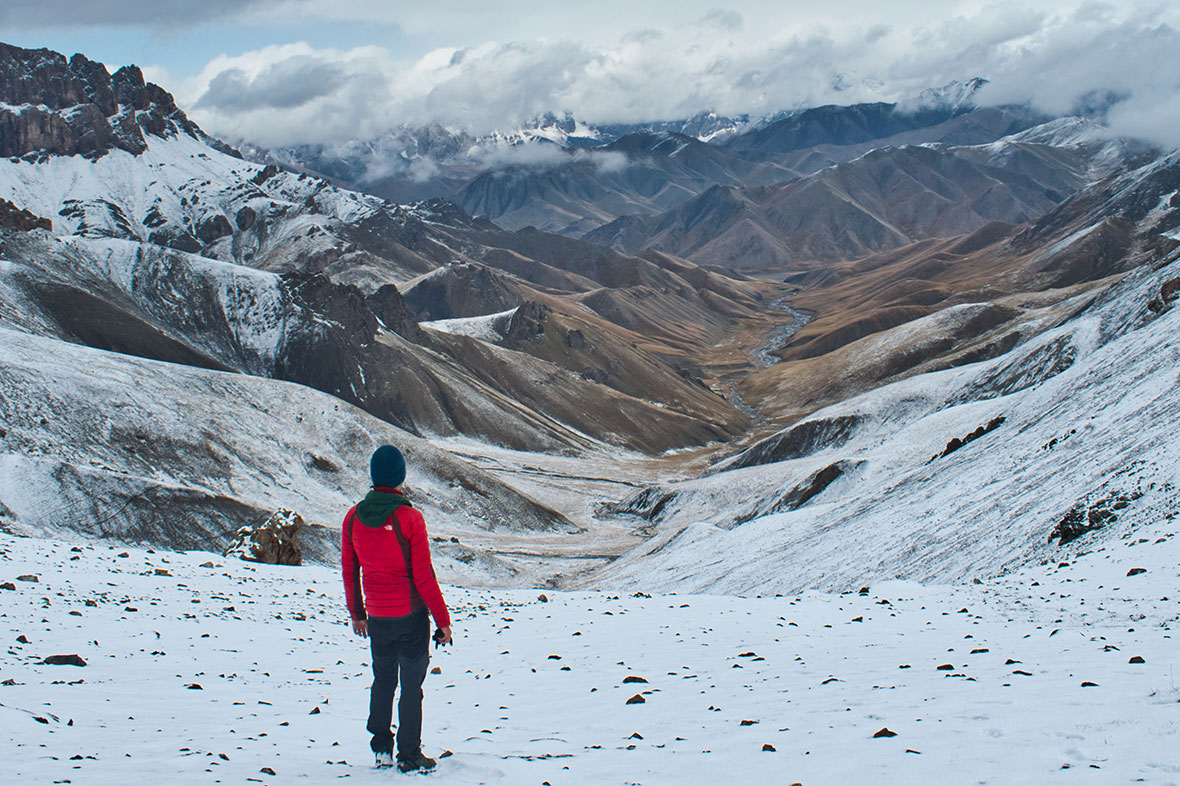
Meder bought order to proceedings by individually calming down each straying horse, and Berdadi told the group to show more authority in the saddle. Gradually our confidence increased. Once my horse started walking in the right direction, my posture improved, with the reins more relaxed in my hands and my feet comfortably in the stirrups.
By now, the spirit in the group was high. We entered the Tyok Boto valley, a vast area where I felt insignificant in the world. I had a contradictory sense of isolation while being part of a group. However, Tyok Boto was once a thriving trading route and our first direct encounter with the Silk Road.
We dismounted at this point and spent the remainder of the day hiking while Meder and Azermat broke ranks to set up dinner and camp. We covered a fair amount of ground in a short time, including a few awkward river crossings made easier on horseback than on foot.
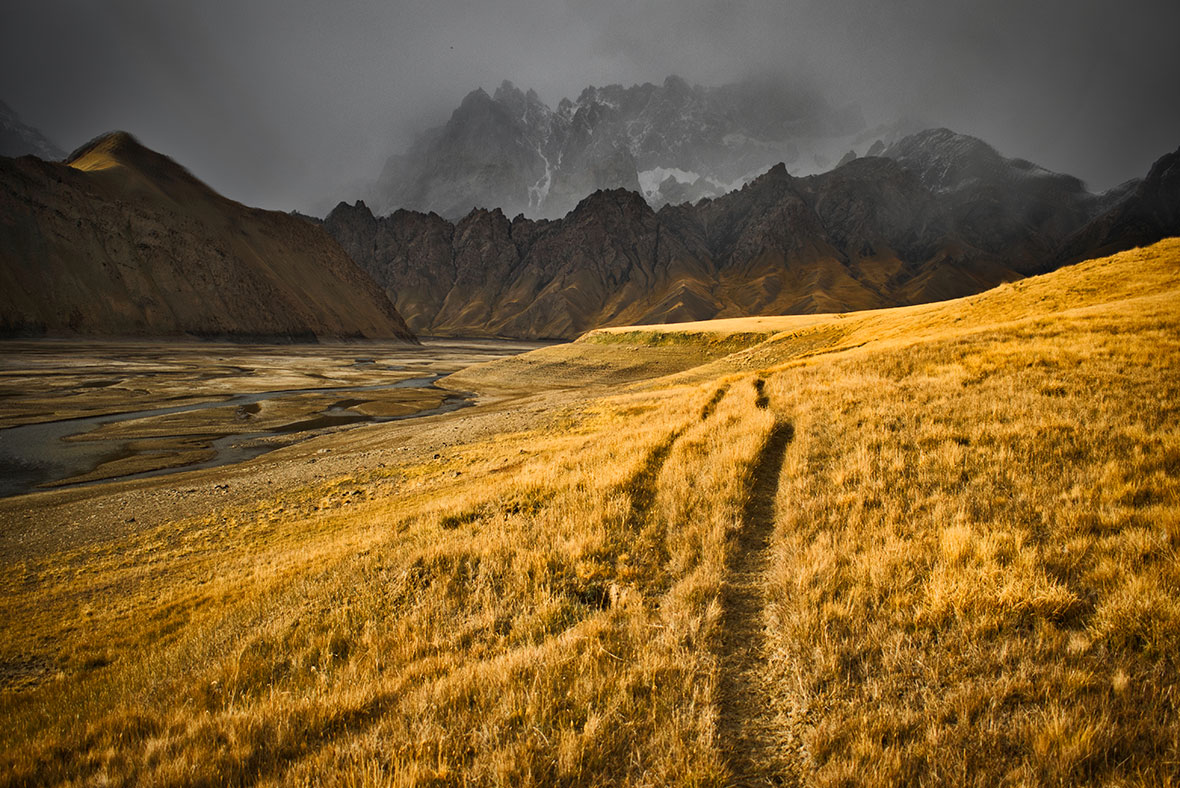
From snowy mountain passes to fields of gold along the lowland pastures, the afternoon landscapes were dreamlike in their beauty. Finally, we approach the Kol Suu lake, known for its emerald waters and stunning mountain reflections. But the lake was almost dry. Deep clay-like cracks dominated the lake’s surface, enabling us to walk across. Soon we could see Meder and Azermat putting up tents as the light began to fade.
After a piping hot stew, we all huddled around the campfire. The sharp drop in temperature encouraged the group to drink any available liquids for extra warmth. Tea, Vodka, and even Vodka tea were all gratefully received. Then, Meder spontaneously broke into a traditional song and received cheerful applause. Berdibai then asked me to sing an English song. I hesitantly obliged with my alcohol-induced version of The Beatles ‘When I’m Sixty-Four,’ and the entertainment had begun.
Despite the cold, the atmosphere and camaraderie had an abundance of warmth. All inconveniences, from no electricity to zero communication with the outside world, are temporary. This experience was not about turning my back on modern living but rather a reminder to disconnect more often.
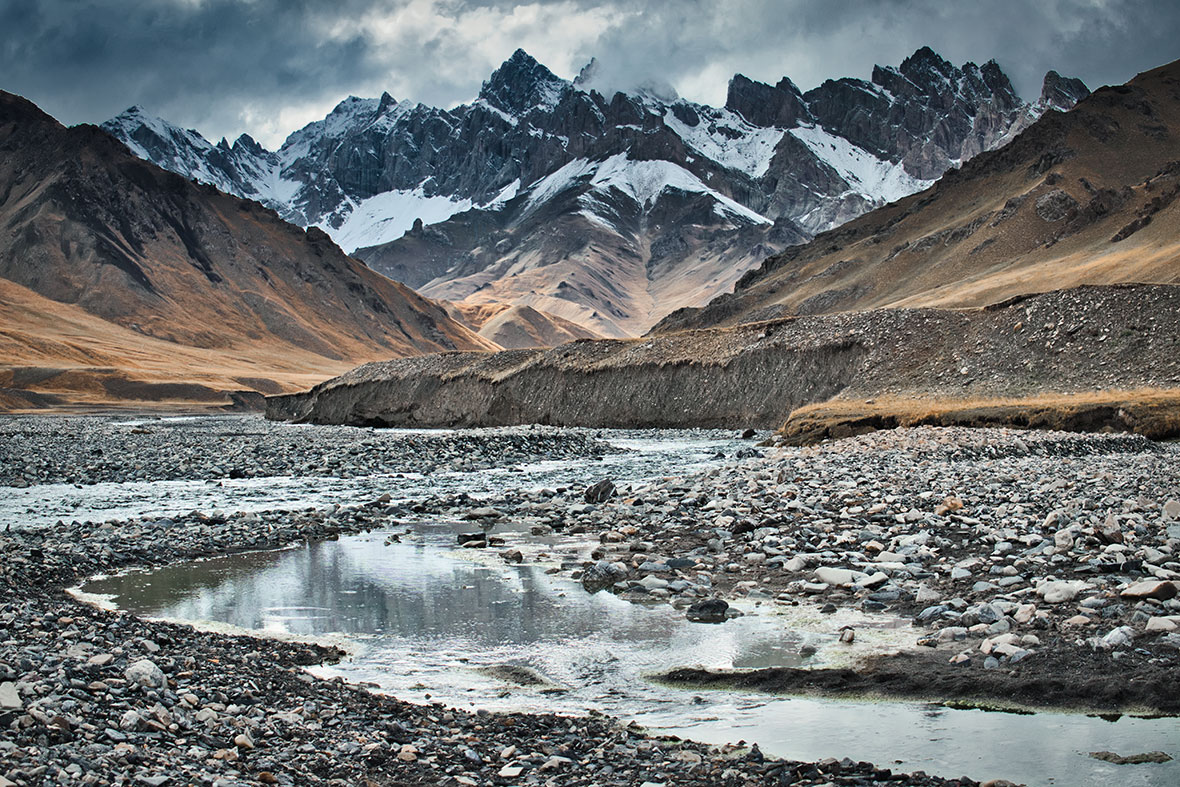
The sight of the fire’s dying embers signaled bedtime. I gazed upwards and noted the brilliant stars were sparkling against the dark heavens. My eyes were wide open, not looking at one star, yet I could see them all at once.
We made the long trip back to Meder’s Yurt Camp along the winding Kol Suu River, breaking up the journey by staying the night in a disused shepherd’s hut for a warmer sleep and more hot tea.
I woke up refreshed and took my horse for one last gallop as we rode back to the camp. It was lovely to see the young children practicing their riding skills with the help of their elders. Jazgul had prepared a farewell banquet lunch before we all hugged and said our goodbyes.
With so many beautiful memories, I knew I’d fallen for this tiny corner of the world… truly, nomadly, deeply.
